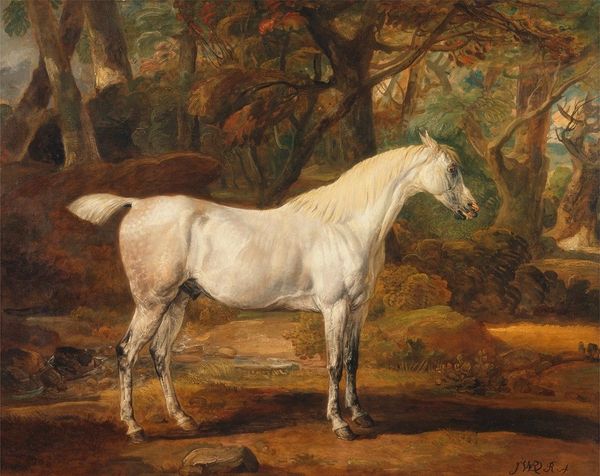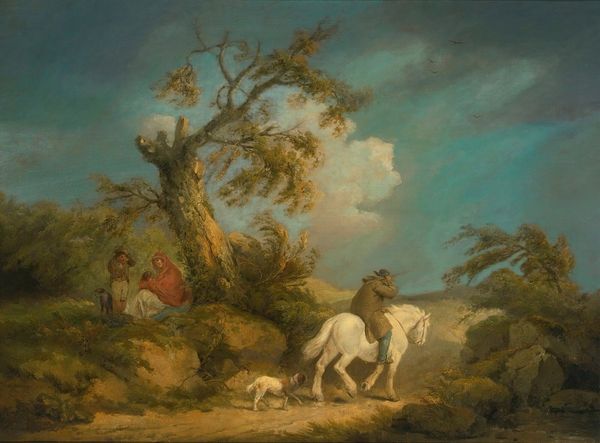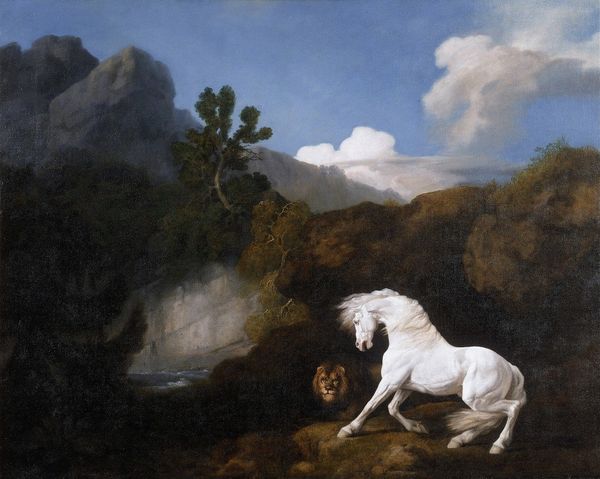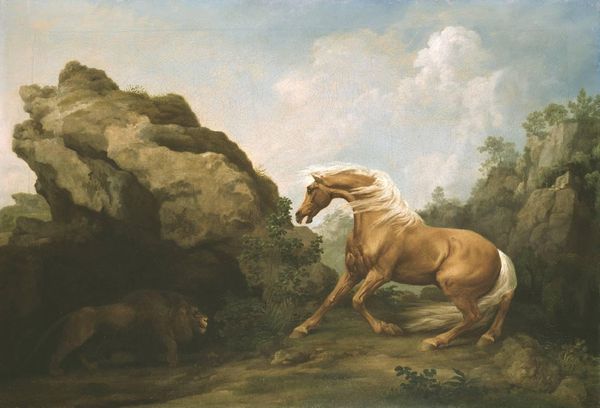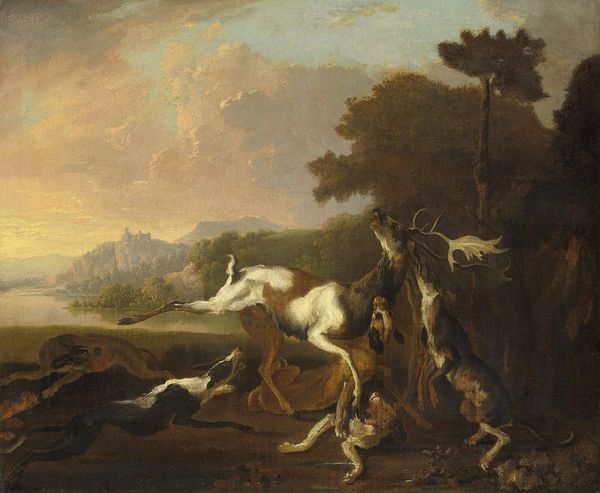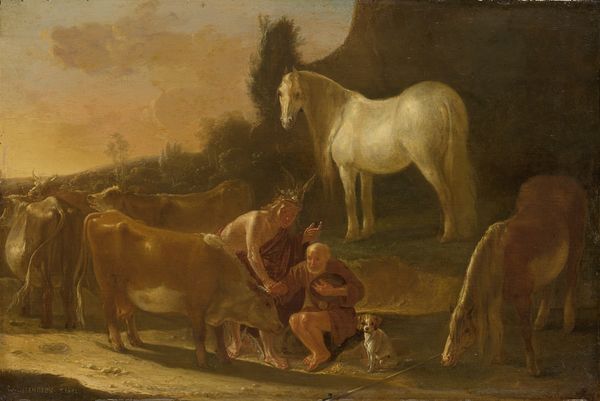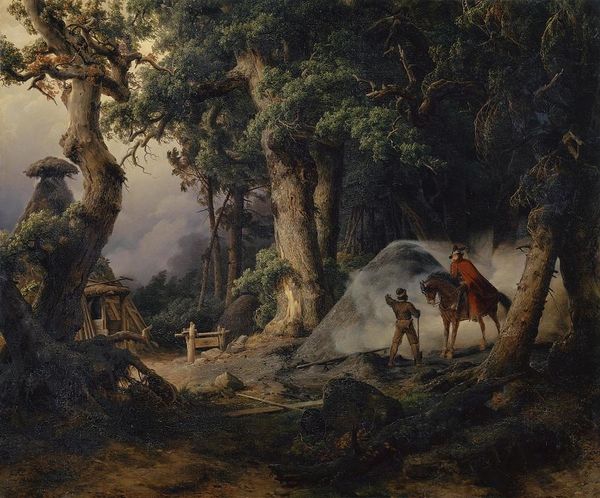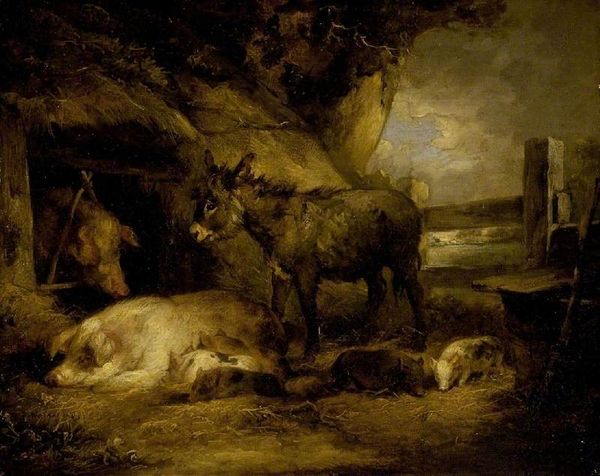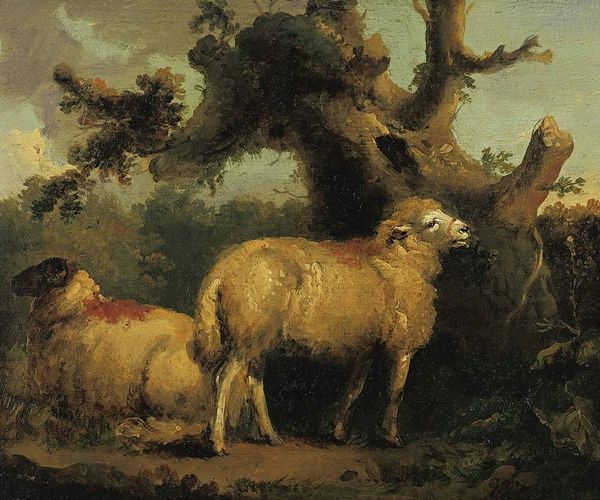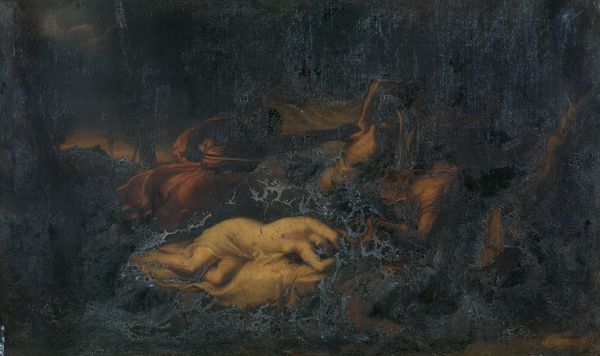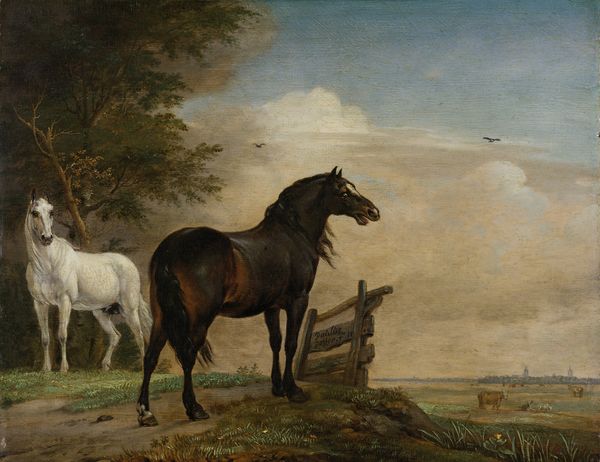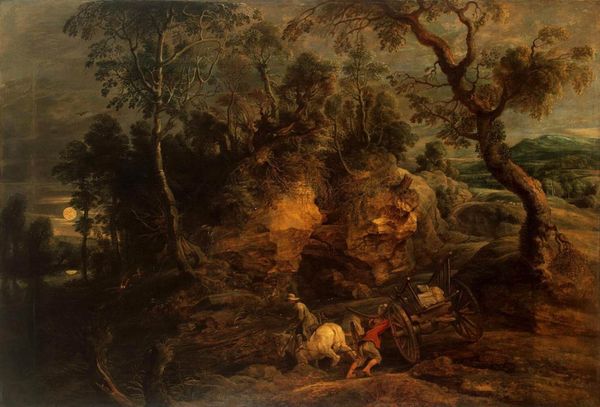
#
animal
#
charcoal drawing
#
possibly oil pastel
#
oil painting
#
acrylic on canvas
#
underpainting
#
animal portrait
#
painting painterly
#
animal drawing portrait
#
surrealist
#
watercolor
Copyright: Public Domain: Artvee
Editor: So, here we have "The Sand Pit" by James Ward, dating back to 1810. It seems to be oil on canvas. What strikes me most is the almost staged quality of the scene – the weary laborer, the attentive animals, and the looming landscape. What do you make of it? Curator: Immediately, I'm drawn to the relationship between labor and material here. Observe how the painting meticulously depicts the tools – shovels, bags, even the harness. This wasn't merely an aesthetic exercise. Ward showcases the means of production. What sort of labor do you imagine was involved, considering the presence of both a horse and donkeys? Editor: Probably heavy, manual labor. Extracting sand, maybe for construction or agriculture. There's a sense of… collaboration? Even the animals seem to be part of this working community. Curator: Exactly. Think about the social context. Early 19th century England was rapidly industrializing, yet scenes like this highlight the continued dependence on animal and manual labor in many sectors. Notice how Ward renders the texture of the sand, the worn harnesses, even the coarse fabric of the laborer's clothes. He gives prominence to the tangible materials and the wear and tear of daily work. The animals are not simply beasts of burden, but co-workers. Editor: That’s interesting, it makes you consider the physical cost reflected in the landscape and in those beings. It’s much more about materiality than romanticism then? Curator: Precisely. It challenges traditional "high art" expectations, doesn’t it? How art often overlooks the everyday reality of material extraction and production. The value wasn't only in the finished product, but in the depiction of the labor itself. Editor: That gives me a new perspective, really reframing my initial read. It is not merely a pastoral scene but a portrait of labor and the raw materials that built the world around it. Curator: Agreed. Thinking about the work in that frame invites questions of labor, industrial development, and the representation of working communities during the industrial revolution.
Comments
No comments
Be the first to comment and join the conversation on the ultimate creative platform.
